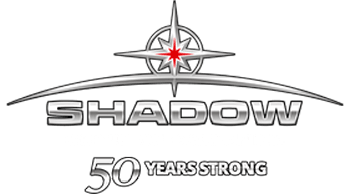Line haul transportation is a critical component of logistics, ensuring the efficient movement of freight over long distances. Whether it’s between cities, provinces, or states, this service helps businesses maintain supply chain efficiency by transporting goods swiftly and reliably.
In Canada and the USA, line haul transportation plays a key role in keeping industries connected and ensuring products reach their destinations on time.
Shadow Group’s expertise and advanced logistics solutions can help businesses optimize their freight movement and enhance supply chain efficiency. This article will explore why line haul transportation matters, its benefits, and the key steps involved in the process.
Understanding Line Haul Transportation and Why it Matters
Line haul transportation is all about moving goods between major hubs, usually using trucks, trains, or other freight carriers. Unlike last-mile delivery, which focuses on getting products to their final destination, line haul covers the long-haul journey between cities, ports, or warehouses. It’s a crucial service for businesses that need fast, reliable freight movement to keep supply chains running smoothly.
Key Features of Line Haul Transportation
- Long-Distance Freight Movement – Goods are transported between major cities, ports, or warehouses, ensuring large-scale distribution.
- Multiple Modes of Transport – While trucking is the most common, rail, air, and even sea transport can be involved in line haul operations.
- Optimized Routes – Logistics providers use advanced route planning to maximize efficiency and minimize costs.
- Reliable Scheduling – Businesses depend on predictable transit times to maintain inventory and production schedules.
Safety From Start to Finish
Line haul transportation services play a crucial role in connecting businesses to markets across Canada and beyond. The process involves several key steps to ensure smooth and timely freight movement.
1. Freight Pickup & Preparation
Before the journey begins, shipments are picked up from warehouses, manufacturers, or distribution centers. Cargo is inspected, categorized, and secured to ensure safe transport. Proper packaging and load balancing are crucial to prevent damage and optimize space utilization.
2. Route Planning & Optimization
Advanced logistics systems determine the most efficient route based on traffic patterns, weather conditions, and delivery deadlines. This step helps minimize transit time and operational costs.
3. Transport & Monitoring
Once on the move, shipments are continuously tracked using GPS and fleet management technology. This real-time visibility allows logistics providers and clients to monitor progress and anticipate any potential delays.
4. Hub Transfers & Sorting
At distribution hubs, cargo may be sorted and redirected to its next destination. This process ensures that freight follows the most efficient path through the supply chain.
5. Final Delivery or Next Phase of Logistics
Upon reaching its destination hub, the shipment either moves to a final-mile delivery service or is stored for further distribution. The efficiency of this transition is vital for maintaining supply chain fluidity.
Peace of Mind
Companies can confidently rely on line‑haul trucking to move goods of every shape. It all starts with a quick heads‑up about the load, and your carrier lines up the right rig—flatbed, reefer, step‑deck, or dry van—before pickup. That seamless fit is exactly why line haul transportation matters: it removes the guesswork and ensures every item rides in the vehicle best suited to keep it safe.
Reliable Line Haul Transportation in Canada and The USA
For businesses in Calgary seeking dependable line‑haul transportation, Shadow Group delivers industry‑leading solutions. Our unwavering focus on efficiency, reliability, and customer satisfaction highlights why line haul transportation matters—your freight arrives on schedule and in perfect condition.
Whether you need long-haul trucking across Canada or a customized logistics solution, our expert team is ready to optimize your supply chain and streamline your operations. Contact us to learn more about our services and how we can support your business’s transportation needs.
Safety from start to finish. That’s the Shadow Group way.
